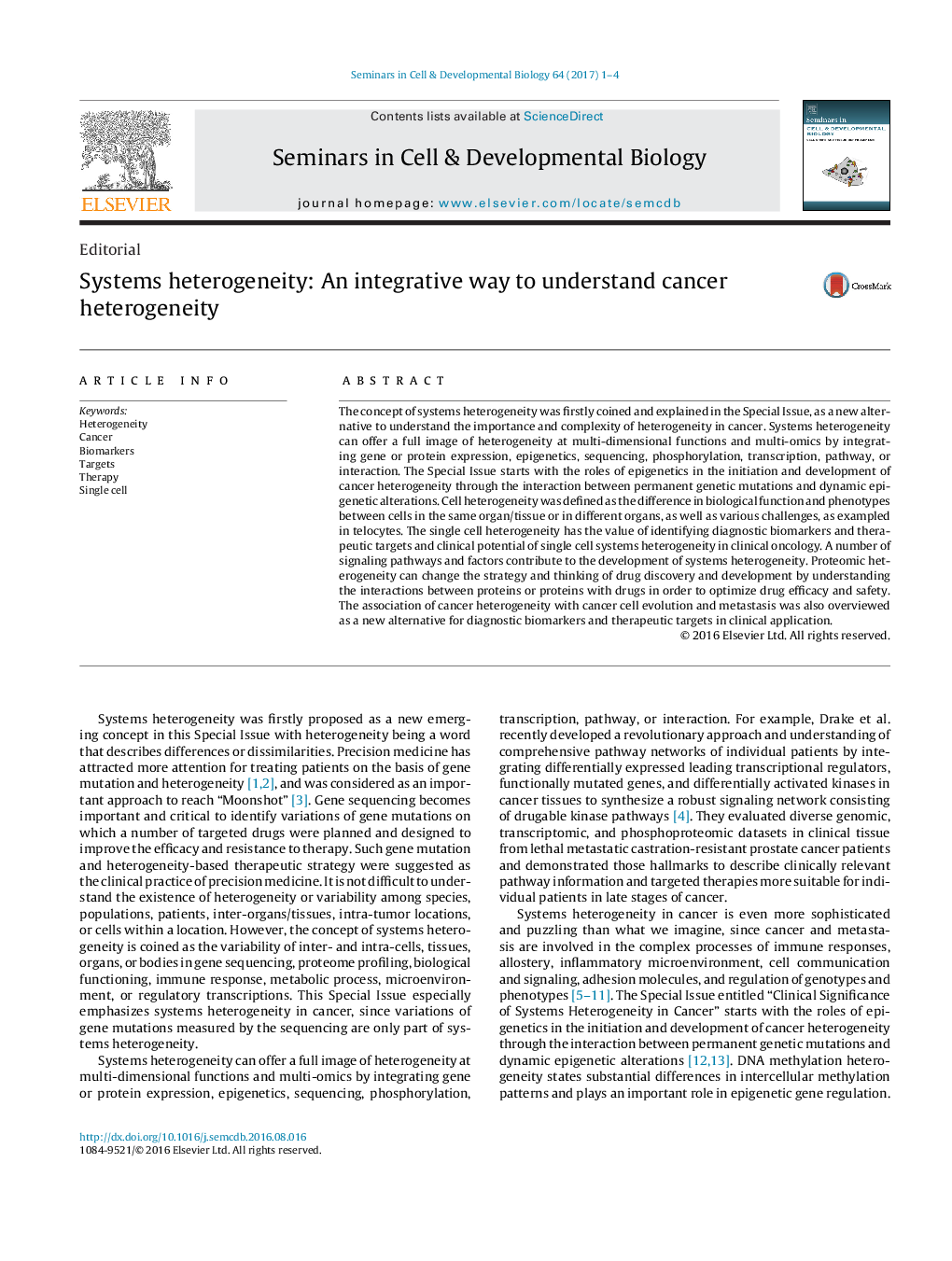| Article ID | Journal | Published Year | Pages | File Type |
|---|---|---|---|---|
| 5534914 | Seminars in Cell & Developmental Biology | 2017 | 4 Pages |
The concept of systems heterogeneity was firstly coined and explained in the Special Issue, as a new alternative to understand the importance and complexity of heterogeneity in cancer. Systems heterogeneity can offer a full image of heterogeneity at multi-dimensional functions and multi-omics by integrating gene or protein expression, epigenetics, sequencing, phosphorylation, transcription, pathway, or interaction. The Special Issue starts with the roles of epigenetics in the initiation and development of cancer heterogeneity through the interaction between permanent genetic mutations and dynamic epigenetic alterations. Cell heterogeneity was defined as the difference in biological function and phenotypes between cells in the same organ/tissue or in different organs, as well as various challenges, as exampled in telocytes. The single cell heterogeneity has the value of identifying diagnostic biomarkers and therapeutic targets and clinical potential of single cell systems heterogeneity in clinical oncology. A number of signaling pathways and factors contribute to the development of systems heterogeneity. Proteomic heterogeneity can change the strategy and thinking of drug discovery and development by understanding the interactions between proteins or proteins with drugs in order to optimize drug efficacy and safety. The association of cancer heterogeneity with cancer cell evolution and metastasis was also overviewed as a new alternative for diagnostic biomarkers and therapeutic targets in clinical application.
